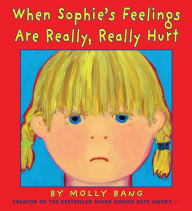When her brother's hand-me-down shoes don't fit, it is time for Ella Mae to get new ones. She is ecstatic, but when she and her mother arrive at Mr. Johnson's shoe store, her happiness quickly turns to dejection. Ella Mae is forced to wait when a customer arrives after her and is served first. Ella Mae is unable even to try on the shoes because of her skin color. Determined to fight back, Ella Mae and her friend Charlotte work tirelessly to collect and restore old shoes, wiping, washing, and polishing them to perfection. The girls then have their very own shoe sale, giving the other African American members of their community a place to buy shoes where they can betreated fairly and "try on all the shoes they want." Set in the South during the time of segregation, this stunning picture book brings the civil rights era to life for contemporary readers.
Publishers Weekly
★ 12/08/2014
After Ella Mae discovers that even buying shoes is a humiliating experience for people of color in 1950s Jim Crow America (she isn’t allowed to try the shoes on), she and her cousin Charlotte unleash their entrepreneurial talents, opening a backyard store of clean, used shoes. Now, Ella Mae explains, “anyone who walks in the door can try on all the shoes they want.” It isn’t easy to make a story seem as if it’s telling itself, but this gripping piece of historical fiction does just that. Meyer’s (Black Radishes) prose is vividly precise in its detail; the girls’ optimism and determination is almost palpable, and when Ella Mae and Charlotte prepare their inventory for sale, the smell of soap, polish, and leather seems to fill the air. Velasquez (A Thirst for Home), working in oils, takes an unobtrusive, documentary-style approach, but he also cleverly combines warm, earth-toned settings with the bright pastel dresses worn by Ella Mae and Charlotte, so that his heroines literally and unequivocally shine through. Ages 6–9. Author’s agent: Erin Murphy, Erin Murphy Literary Agency. (Feb.)
Children's Literature - Barbara L. Talcroft
Set in the 1950s, this moving story introduces two young cousins, Ella Mae and Charlotte, who live in a small town during the time of segregation. Each girl has had an unpleasant experience at the local shoe store: because they’re “colored,” they’re not allowed to try on the shoes. Mama and Ella Mae must defer while the owner waits on a white girl first; then Mama has to draw around Ella Mae’s feet and buy the shoes Mr. Johnson reckons will fit. Mama accepts the situation stoically but Ella Mae finds it unfair and upsetting. When she tells her cousin about the shoes, Charlotte sympathizes, but Ella Mae has an idea. Readers see the girls washing dishes, scrubbing floors, minding a baby because they are willing to work for even a nickel—and a pair of outgrown shoes. In the little barn behind Ella Mae’s house the girls set to work cleaning the collected shoes and scrubbing the laces. Soon their shoe shop in the barn opens to waiting neighbors, eager for a used pair of shoes priced at ten cents. When a mother asks if her daughter can try on a pair, Ella Mae proudly announces: “In our store, anyone who walks in the door, can try on all the shoes they want.” The charming young cousins are beautifully realized in Velasquez’s oil paintings. Winner of a Pura Belpré and a John Steptoe Award, Velasquez paints each girl from many perspectives, while subtly revealing their emotions and determination to fight back. Meyer has told a simple but profound story. Her valuable “Author’s Note” about discrimination in the 1950s will help today’s teachers and students understand the civil rights movement. Reviewer: Barbara L. Talcroft; Ages 6 to 9.
School Library Journal
02/01/2015
Gr 1–3—Ella Mae usually gets her new school shoes as hand-me-downs from her older cousin, Charlotte. One day, Charlotte's old shoes are too tight for Ella Mae and so the girl gets to buy a brand new pair of shoes. At Johnson's General Store, however, Ella Mae is treated differently from another customer with "yellow pigtails." The treatment is because of the color of her skin: she is served second even though she arrived first, and she is not allowed to try on any of the beautiful new shoes. With a little brainstorming and some hard work, Ella Mae and Charlotte come up with a plan to allow everyone to try on shoes before they buy them. The illustrations paint an accurate historical picture of the 1950s and do well enough to bring out the characters' emotions, which may not otherwise be noticed in the text. An author's note at the end explains Jim Crow, the civil rights movement, and the evolution of language used to describe African Americans. The use of a lesser-known Jim Crow situation makes it stand out from other titles dedicated to this topic, but the message is very similar. VERDICT A decent introduction to the history of segregation in the U.S.—Brittany Staszak, St. Charles Public Library, IL
Kirkus Reviews
2014-12-06
Meyer and Velasquez offer a tale that sets two young victims of discrimination on a path of resistance through entrepreneurship.Set in 1950s Anytown, U.S.A., the journey begins when Ella Mae's mother takes her to Johnson's Shoes to buy a new pair. They watch a white girl try on pair after pair, but the sales clerk will not permit Ella Mae to put her feet in any of them. The girl shares her disappointment with her cousin Charlotte, and the two concoct a plan to reclaim their dignity. They set to work, doing chores for the odd nickel and "a pair of outgrown shoes," ultimately setting up a community used-shoe shop in Ella Mae's backyard. Masterful oil-based artwork evokes the perseverance and poise of two young black girls who stand up against Jim Crow discrimination. Meyer delivers her message with understatement, the "gal" the clerk calls Ella Mae's mother slapping both her and readers in the face. The tale stands out from other stories of children overcoming obstacles, emphasizing how resistance and transformation can be found in the smallest of actions. An author's note gives readers background on Jim Crow and the Civil Rights and Voting Rights acts. Highly recommended; both a revealing glimpse into one aspect of America's institutionalized racism and inspiration for kids to create their own change. (Picture book. 5-8)
Read More













